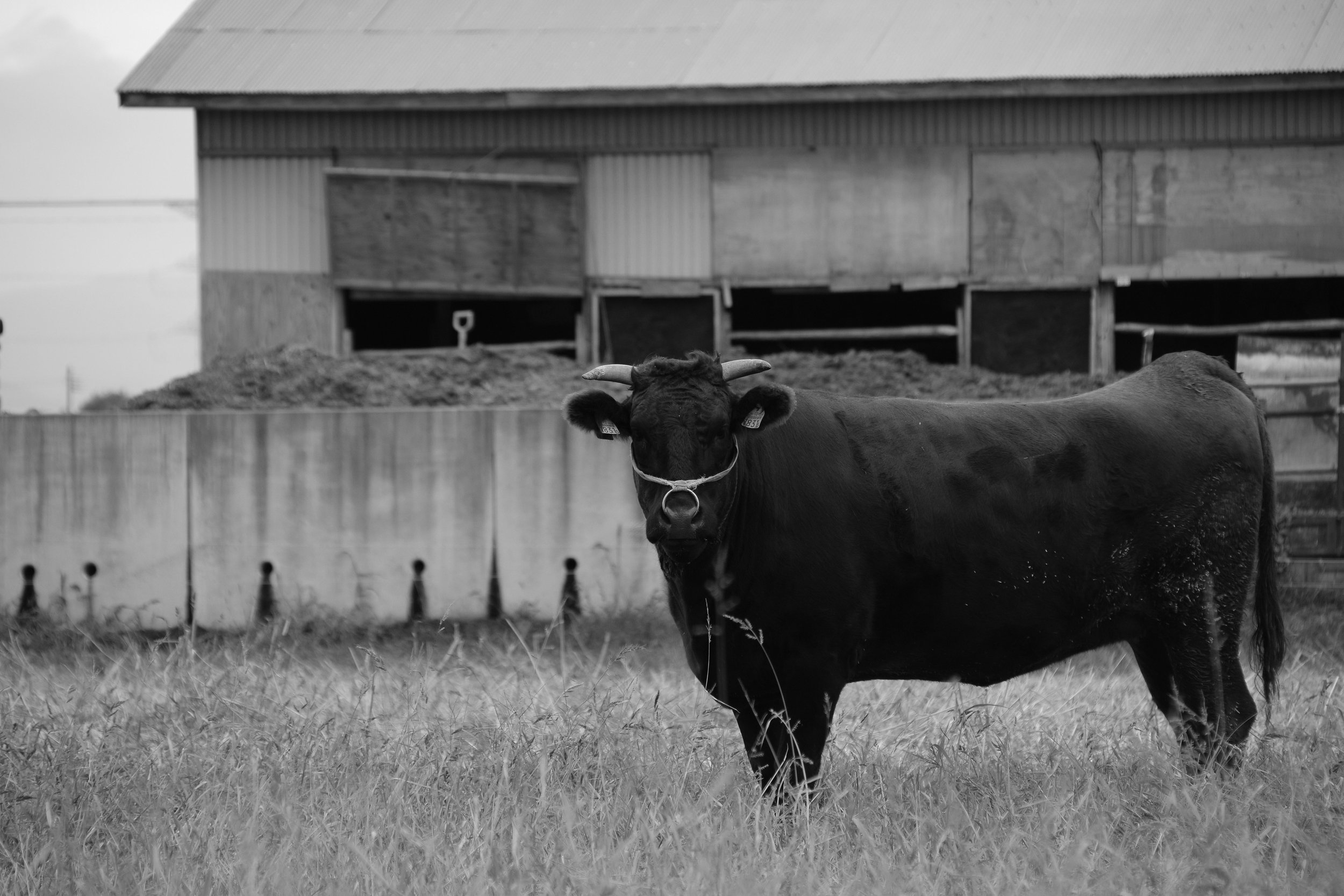
WAGYU
101
The Wagyu breed (和牛) is a breed of beef cattle from Japan. Wagyu were raised in Japan as beasts of burden for more than 2,000 years before they were consumed for meat in Japan starting around 1867 at the beginning of the Meiji Restoration, when a long-standing ban on eating meat in Japan was lifted.
Somehow the selection of animals for work animal purposes over a 2,000+ year period resulted in the unintended consequence of the Wagyu breed evolving into a breed that had outstanding meat quality.
This—combined with a highly regulated government-led breed improvement program starting in the 19th century—led to the breed now known around the world for the ultimate beef culinary experience.
Only a small number of Wagyu have been exported from Japan and all future exports of Wagyu have been banned by the Japanese government.
While producers outside of Japan have been working to grow the breed, Wagyu make up a very small portion of the total beef cattle herd both in the U.S. and worldwide.
Beef from Wagyu cattle is arguably the best quality beef in the world—a beef product that is tender, highly marbled and more healthful than beef from other breeds.

Wagyu
History
The term “WAGYU”—properly pronounced “waa-gyew”—literally means “Japanese cow” in Japanese. “Wa” means Japanese and “gyu” means cow.
In Japan the term Wagyu refers to one of four major “strains” of beef cattle that were “improved by crossbreeding with non-Japanese cattle during a short period between approximately 1867 and 1910. In Japan these four major strains of Wagyu include Japanese Black, Japanese Brown, Japanese Polled and Japanese Shorthorn.
In Japan these four major strains of Wagyu include Japanese Black, Japanese Brown, Japanese Polled and Japanese Shorthorn. The Japanese Brown are typically referred to outside of Japan as “Red Wagyu”, and also referred to by some as “Akaushi”, which means “red cow” in Japanese.
Only Japanese Black and Red Wagyu have been exported from Japan. There are a number of different major bloodlines within each of the four major strains of Wagyu.
The genetics of only 221 Wagyu animals are known to have been exported from Japan, all of which were exported between 1976 and 1997. This includes 167 Black Wagyu live animals exported from Japan to the U.S along with 21 calves sired by Japanese bulls born after the arrival of the females, and 16 Red Wagyu live animals exported from Japan to the U.S. along with 6 calves sired by Japanese bulls.
Realizing the substantial value of their unique beef cattle after this small number of Wagyu were exported, the Japanese government officially declared their Wagyu a national treasure and banned all further export of Wagyu cattle and genetics.
After the initial exportation of the original 183 live animals from Japan to the U.S., Wagyu genetics were exported from the U.S. to Australia, Canada and subsequently the Wagyu breed has spread across the globe, with all registered Wagyu animals outside of Japan originating from the genetics of the 221 original animals exported to the U.S.
Wagyu were originally draft animals used in agriculture in Japan, and were selected over a long period of time for their physical endurance. This selective breeding process with a goal of producing good draft animals, over many generations, favored the breeding of animals with more intra-muscular fat cells.
This intra-muscular fat, which the beef industry refers to as “marbling”, provided a readily available energy source, which allowed these animals to release large amounts of energy in a burst of work as draft animals.
The evolution of Wagyu separate and apart from other major lines of Bos taurus cattle and this selective breeding for work purposes over many years, complemented by an aggressive Japanese government-led breeding management program in the 20th century, resulted in breed now known around the world for the ultimate beef culinary experience.
Wagyu cattle arguably produce the best quality beef in the world, a beef product that is tender and highly marbled, with a low melting point fat that “melts in your mouth”. Wagyu beef is also more healthful than beef from other breeds of cattle due to a higher ratio of monounsaturated fatty acid as compared to saturated fatty acid.
Wagyu cattle produce very low birth weight calves, grow and mature slower and as adults are somewhat smaller than most European breeds. Wagyu have wonderful dispositions, breed earlier and live longer than European breeds, and are highly adaptable to a wide range of climates and terrains.
Wagyu bulls are known to be exceptionally fertile and have strong libido, enabling Wagyu bulls to breed a larger number of cows per bull compared to other breeds. It is not unusual for a single mature Wagyu bull to breed a herd of up to 50 cows.
Wagyu is a horned breed and the cattle are either black or red in color. Outside of Japan, there are four major strains, three black and one red. Because of the relative isolation of one Japanese prefecture to another and the selective breeding that took place in each area, different characteristics emerged from the various strains. However, having evolved from the native Asian cattle, the Wagyu bloodlines are somewhat related.
